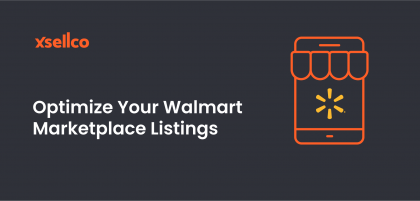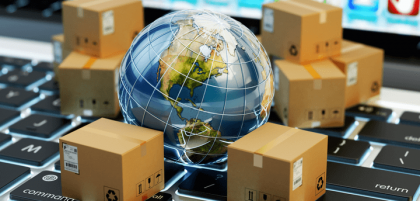As more of the world’s population become digital buyers, opening your e-commerce store to cross-border selling proves to be a wise business move.
In fact, merchants’ attitudes toward cross-border e-commerce are increasingly positive. Payvision asked industry players from all over the world about their confidence in selling internationally online and 50 percent of respondents agreed that cross-border e-commerce is profitable.
That being said, it’s inevitable that issues may occur—but it shouldn’t deter you from taking your business global. Here’s how to solve those sticky international shipping problems you may come across.
Surprise shipping fees
Postal couriers, such as USPS, have simple pricing structures where you mostly pay for your shipping costs. Express couriers, such as UPS and FedEx, offer faster and more reliable services, but with a more complex pricing structure.
Becoming familiar with the common surcharges that express couriers have can help you avoid the feeling of sticker shock when you receive your monthly shipping bill.
Unavoidable surcharges
- Fuel surcharge: Calculated as a percentage of the shipping costs, this varies weekly or monthly depending on the country. The price of gas can have a significant impact on your bills.
- Remote area/extended area surcharge: Delivery addresses that are far from the usual collection path of the courier can incur this additional charge. You may want to tell your customers at checkout that extra shipping fees may apply for certain locations so they know what to expect.
Tips to avoid surcharges:
- Failed deliveries: Express couriers can charge you for delivery re-attempts, address correction fees and return fees. Ensure you are collecting valid and accurate contact and address information from your customers at checkout.
- DDP (Deliver Duty Paid) surcharge: Many express couriers are qualified customs brokers that can process customs duties for a fee. One option to avoid these additional charges is to choose the DDU option (Deliver Duty Unpaid).
However, if you choose the DDU option, your package will be delayed as customs needs to receive the duties payment before your shipment can be released. So using the DDP option could be better for your business because it reduces the chance of your shipment getting delayed in customs, which could cost you even more.
What to do when your shipment is stuck in customs
There are many reasons why a shipment might be stuck in customs, varying in severity from high (your goods are prohibited for import) to low (having the incorrect paperwork).
To get your parcel out of customs limbo, it’s best to do the following:
- Contact your courier directly. As mentioned above, premium couriers can also be customs brokers, so they can figure out what the issue is and help clear your shipment.
- Find out if outstanding taxes require payment. If your shipment has any unpaid duties, arrange payment as soon as possible to settle the balance.
- Ensure there is no missing or incorrect paperwork. Provide any details, corrections or paperwork required by the customs official to process your shipment.
To help your shipments get through customs faster:
- Ensure your product is not prohibited in your destination country. Research what’s allowed to be shipped. Easyship’s Countries page is a great resource to check.
- Provide accurate customs values on your paperwork. Never under-declare the value of your items. Customs can confiscate your shipment if they suspect it’s more valuable than you claim, or it can take longer to process and turn into a worse situation.
- Choose shipping solutions that provide good tracking. Premium solutions that offer frequent updates can alert you to the status of your package in customs so you can act quickly.
Handling international returns
Not going to lie: handling international returns is tricky.
Still, it may be worth considering. Sixty-six percent of online shoppers check an e-commerce site’s return policy before deciding on a purchase, which suggests that having a return policy will get you a higher conversion rate and a better chance of gaining a customer’s trust.
To simplify international returns:
- Choose an express courier. This is basically for the same reasons: they are more reliable with tracking and have the ability to handle any customs issues.
- Consider writing off the item. If the value of the item is less than the shipping cost, it might be better for you to just send a replacement free of charge instead.
- Find a platform that can automate returns for you. Aftership Returns Center or Returnly can easily set up an automated returns process for your store.
To minimize the chance of returns:
- Have clear photos and descriptions of your items. Taking pictures from multiple angles and having high-resolution photos will show customers exactly what they’re getting.
- Pay attention during order fulfillment. If you are fulfilling orders yourself, double check that the orders are correct. If you are using a third-party fulfillment center, ensure they are trustworthy and accurate.
- Start collecting data on why your items are getting returned. This can give you insights on how you can improve the quality, display, description or shipment procedure for your goods.








